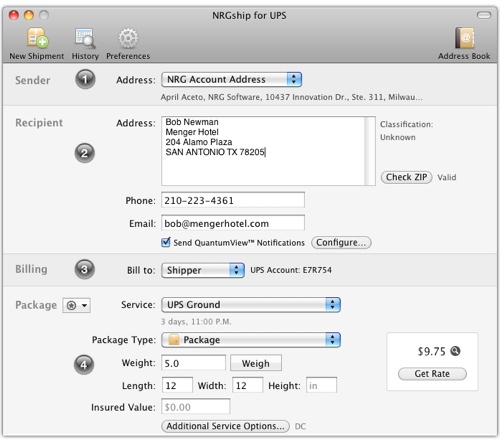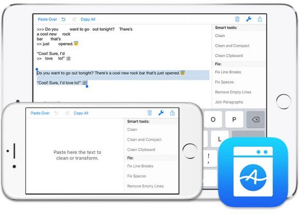Apple Releases QuickTime 4 Public Beta With Internet Streaming
Apple First To Embrace Non-Proprietary Streaming Server Software
NAB, LAS VEGAS-April 19, 1999-Apple Computer, Inc. today released the
public beta of QuickTime 4, its industry-leading multimedia software,
for both the Macintosh and Windows platforms. QuickTime 4 features
“streaming” of live and stored video and audio over the Internet, and
is the first Internet streaming solution to use non-proprietary
industry-standard RTP and RTSP protocols for streaming over the
Internet. In addition, Apple announced that it has begun licensing
its open Internet Streaming Server software under an Open Source
model (see separate release). The public beta software also includes
an all new QuickTime Player that offers easy access to QuickTime
content, and significant enhancements to the QuickTime PictureViewer
application and QuickTime Web Browser Plug-in.
“We are embracing the non-proprietary open server model for Internet
streaming, and even giving away great server software under our Open
Source licensing model,” said Steve Jobs, Apple’s interim CEO. “From
this day forward, content providers, ISPs and network managers will
have a choice-they will not be forced to pay a server tax to Real
Network’s for their proprietary server software.”
QuickTime 4’s new Internet streaming capabilities allow users to play
live and stored video and audio using a variety of compressors and
decompressors, enabling them to experience high-quality playback even
over 28.8Kbps modems. Key features in QuickTime 4 include:
QuickTime Player, providing intuitive user controls, a stunning new
look and feel, and one-click access to Internet content. QuickTime
Player also features audio controls for balance, volume, bass, and
treble; QuickTime PictureViewer, delivering still image support for a
wide range of formats including BMP, GIF, JPEG, PICT, PNG, SGI TIFF,
Adobe Photoshop, and FlashPix; QuickTime Web Browser Plug-in,
enabling Microsoft Internet Explorer, Netscape Navigator and America
Online web browsers to display QuickTime-based media directly inside
web pages; Compression technologies, allowing content providers to
optimize the playback of their content for dial-up Internet access,
CD-ROM and DVD-ROM. These include MPEG-1 layer 3 (MP3), Sorenson
Video, QDesign Music, Qualcomm PureVoice, H.261, GSM and DVI; Network
protocol support for Internet Engineering Task Force (IETF) streaming
standards, RTP, RTSP, SDP, FTP and HTTP; Support for video and
animation formats, such as AVI, DV, Macromedia Flash, OpenDML, GIG
and FLC; QuickTime for Java allowing Java applets to interface with
QuickTime’s entire API; New small, intelligent installer to speed the
download process, especially for QuickTime 4 users with low bandwidth
Internet connections. By enabling users to download only the parts of
QuickTime they immediately need and offering automatic updates,
customers get the fastest possible access to QuickTime content.
QuickTime 4 Pro includes all the features of QuickTime 4 while
unlocking the software’s advanced authoring and playback
capabilities, including:
Multi-format editing, allowing users to integrate video and audio
from anywhere, in any QuickTime supported format, including
streaming; Advanced export capabilities, enabling users to manipulate
still images and convert them to standard publishing formats, such as
Adobe Photoshop, TIFF, BMP, PICT, PNG and JPEG; Ability to create
slide shows that integrate pictures and sound; New Lens Flare and
Zoom filters to further enhance movies and images; Easy preparation
of QuickTime movies for streaming distribution.
Availability, Pricing and System Requirements
Macintosh and Windows users can immediately download a free version
of QuickTime 4 public beta software from Apple’s QuickTime web site
(www.apple.com/quicktime). The advanced playback and editing
capabilities of QuickTime 4 Pro are available to users for U.S.
$29.99. QuickTime 3 Pro customers are automatically upgraded to
QuickTime 4 Pro free of charge upon downloading the QuickTime 4
public beta software.
System requirements for Mac OS-based systems are: 68020, 68030, 68040
or PowerPC processor; at least 8MB of RAM recommended for 68020,
68030 or 68040 processor-based systems and at least 16MB of RAM
recommended for PowerPC processor-based systems; and MAC OS 7.1 or
later.
System requirements for Windows-based systems are: Intel or
compatible processor or any MPC2-compliant PC with minimum 66-MHz 486
processor; at least 16MB of RAM; Windows 95, Windows 98, or Windows
NT 4.0 system software; Sound Blaster or compatible sound card and
speakers; and DirectX version 3.0 or later recommended.
Apple Computer, Inc. ignited the personal computer revolution in the
1970s with the Apple II, and reinvented the personal computer in the
1980s with the Macintosh. Apple is now recommitted to its original
mission-to bring the best personal computing products and support to
students, educators, designers, scientists, engineers,
businesspersons and consumers in over 140 countries around the world.





